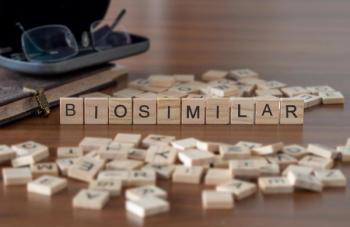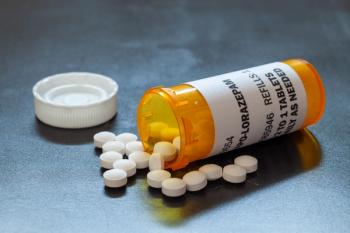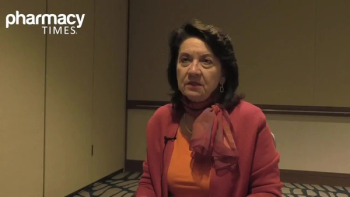
- July 2023
- Volume 89
- Issue 7
Brenzavvy From TheracosBio
The approval carries the limitation that bexagliflozin may increase the risk of diabetic ketoacidosis in patients with type 1 diabetes.
The FDA has approved Bexaglifozin tablets (Brenzavvy; TheracosBio) as an adjunct to diet and exercise to improve glycemic control in adults with type 2 diabetes (T2D).1 The approval carries the limitation that bexagliflozin may increase the risk of diabetic ketoacidosis in patients with type 1 diabetes and should not be used in this population.1
PHARMACOLOGY AND PHARMACOKINETICS
Bexagliflozin is an SGLT2 inhibitor. SGLT2 is responsible for reabsorption of the majority of glucose from the renal glomerular filtrate in the renal proximal tubule. Its inhibition reduces renal reabsorption of filtered glucose and lowers the renal threshold for glucose, which increases urinary glucose excretion. Bexagliflozin reaches peak plasma concentrations 2 to 4 hours after oral administration and displays a terminal elimination half-life of approximately 12 hours.1
DOSAGE AND ADMINISTRATION
The recommended dose of bexagliflozin is 20 mg orally once daily in the morning. It may be taken with or without food and should not be crushed or chewed. Renal function should be assessed before beginning treatment and periodically during treatment. The medication should not be used in patients with an estimated glomerular filtration rate less than 30 mL/ min/1.73 m2 or in patients on dialysis.
Patients with volume depletion should receive volume correction before beginning treatment with bexagliflozin.1
CLINICAL TRIALS
Bexagliflozin’s efficacy and safety were evaluated in adults with inadequately controlled T2D. Patients received the drug as monotherapy; in combination with metformin; as add-on therapy with metformin and compared with glimepiride (Amaryl), which was titrated up to a maximum dose of 6 mg; or as add-on therapy with metformin and compared with sitagliptin (Januvia) 100 mg once daily.1 The trials found a statistically significant reduction in hemoglobin A1c (HbA1c) with bexagliflozin compared with placebo and determined bexagliflozin to be noninferior to glimepiride and sitagliptin.1,2
Bexagliflozin also was evaluated in patients with moderate renal impairment and in patients with established cardiovascular disease (CVD) or increased risk for CVD. Participants were adults with inadequately controlled T2D who continued their baseline background antihyperglycemic therapy. Both trials found a statistically significant reduction in HbA1c with bexagliflozin compared with placebo.1,2
CONTRAINDICATIONS, WARNINGS, AND PRECAUTIONS
The use of bexagliflozin is contraindicated in patients with a hypersensitivity to any of its components and in patients on dialysis.
Patients with symptoms of ketoacidosis should be evaluated promptly, regardless of their blood glucose level. If ketoacidosis is suspected, bexagliflozin should be discontinued and appropriate treatment should be initiated. In the trial of patients with an increased risk for CVD, an increased incidence of lower limb amputations occurred in patients taking bexagliflozin compared with those taking placebo.1
Patients should be monitored for symptoms of infection or ulcers of the lower limbs, and bexagliflozin should be discontinued if these occur. Before beginning treatment, volume status should be assessed and corrected in elderly patients, patients on diuretics, and patients with impaired renal function or low systolic blood pressure. Volume status should be monitored throughout treatment. Patients should be monitored for symptoms of urinary tract infections and treated promptly if appropriate. To reduce the risk of hypoglycemia, a lower dose of insulin or insulin secretagogue may be required when used in combination with bexagliflozin. Serious, life-threatening cases of necrotizing fasciitis of the perineum have occurred in both women and men treated with SGLT2 inhibitors.
Patients with erythema, pain, swelling, or tenderness in the genital or perineal area, along with fever or malaise, should be evaluated promptly and treated if needed. Bexagliflozin increases the risk of genital mycotic infections, and patients should be monitored and treated appropriately. Bexagliflozin is not recommended during the second and third trimesters of pregnancy or if a patient is breastfeeding.
The most common adverse reactions are genital mycotic infections in women, increased urination, and urinary tract infection.1
References
- Brenzavvy. Prescribing information. Theracos-Bio, LLC; 2023. Accessed March 24, 2023. https://www.accessdata.fda.gov/drugsatfda_docs/label/2023/214373s000lbl.pdf
- TheracosBio announces FDA approval of Brenzavvy (bexagliflozin) for the treatment of adults with type 2 diabetes. News release. TheracosBio. January 23, 2023. Accessed March 24, 2023. https://theracosbio.com/wp-content/ uploads/2023/01/01-23-2023_TheracosBio-Announces- FDA-Approval-of-Brenzavvy.pdf
Articles in this issue
over 2 years ago
Brain Health Watchover 2 years ago
Pet Peeves — Brought To You By The Sassy Pharmacistover 2 years ago
Interactive Case Studiesover 2 years ago
Postnasal Dripover 2 years ago
Expanding Tech-Check-Tech Will Move Pharmacy Into the Futureover 2 years ago
Promoting Medication Safety Improves Health OutcomesNewsletter
Stay informed on drug updates, treatment guidelines, and pharmacy practice trends—subscribe to Pharmacy Times for weekly clinical insights.

















































































































































































































